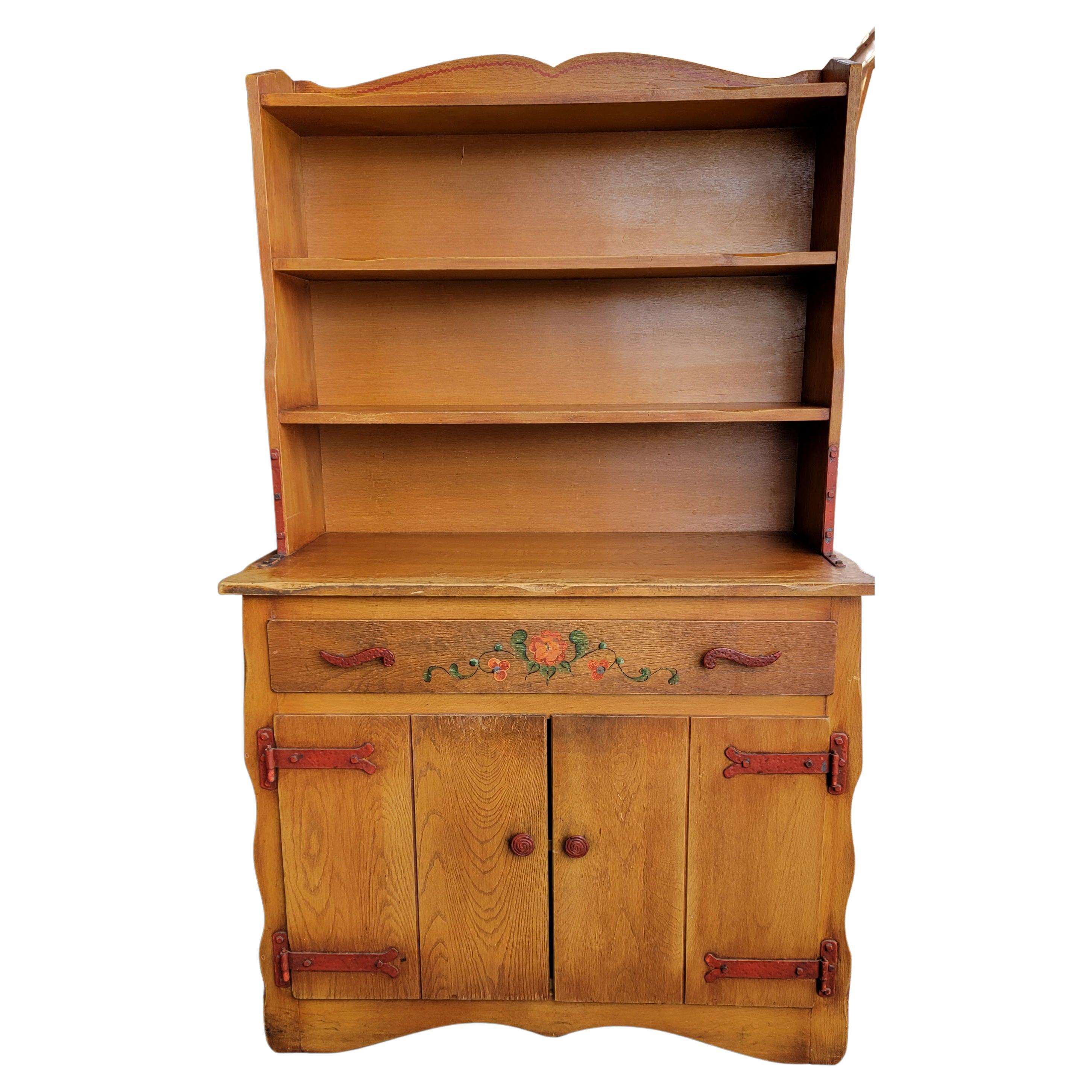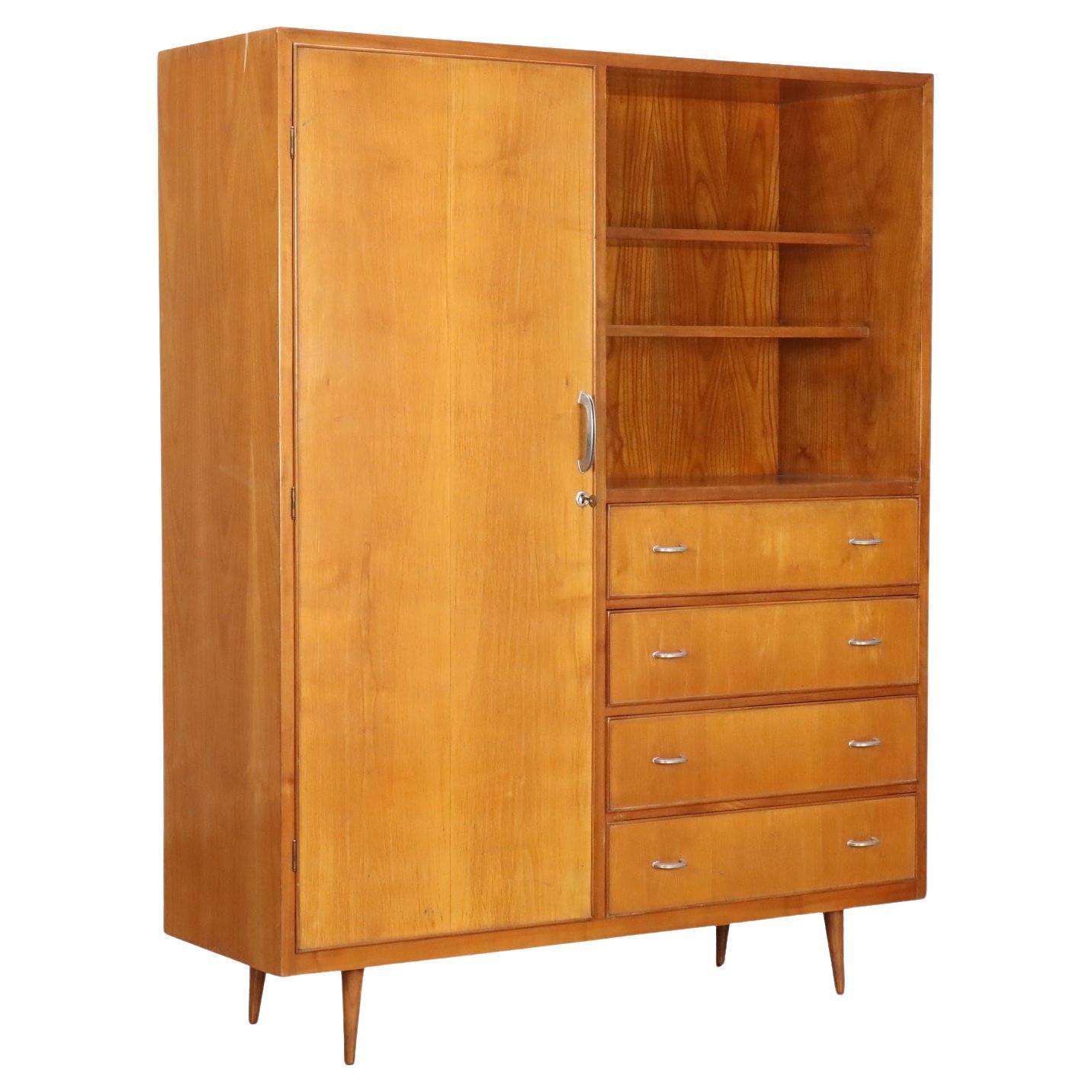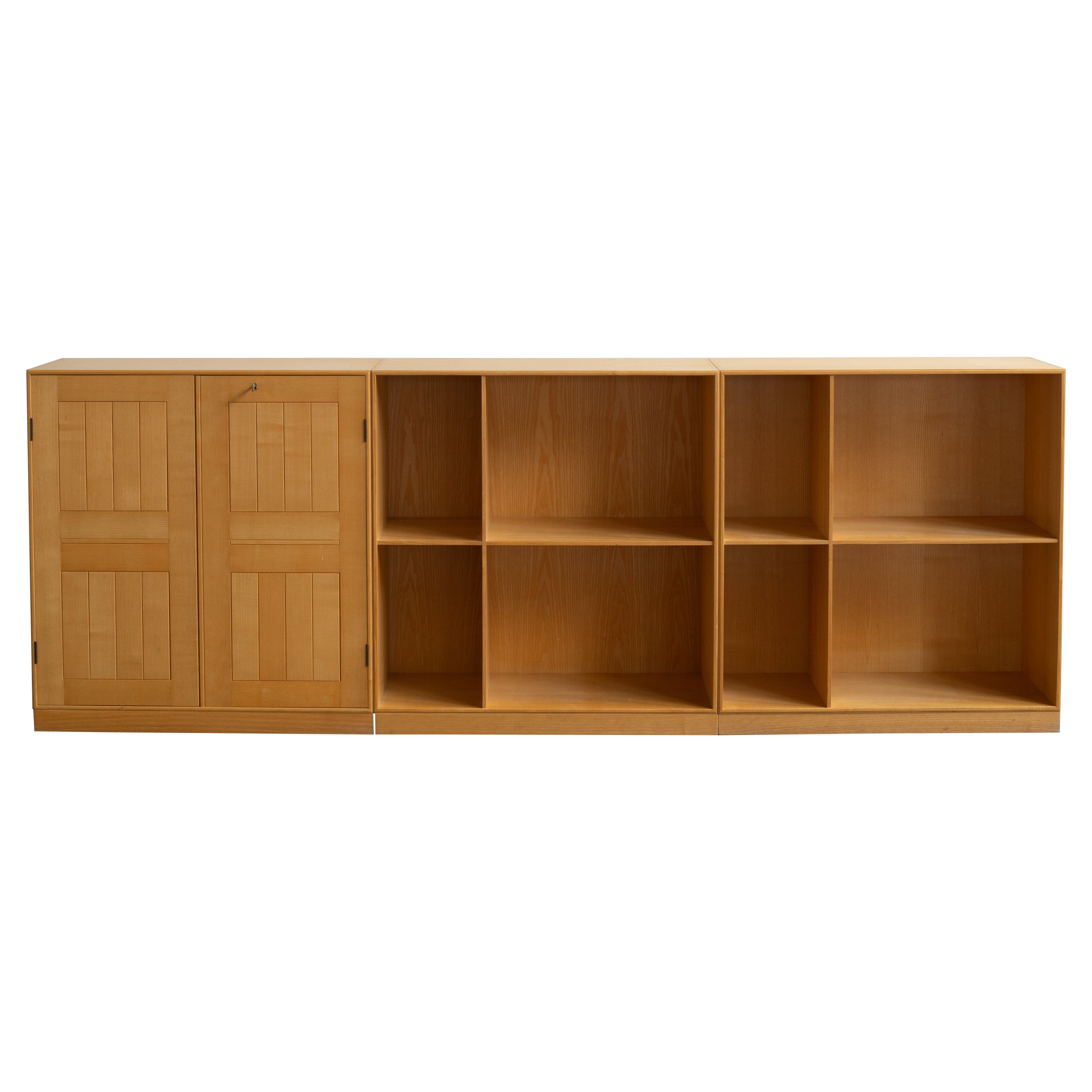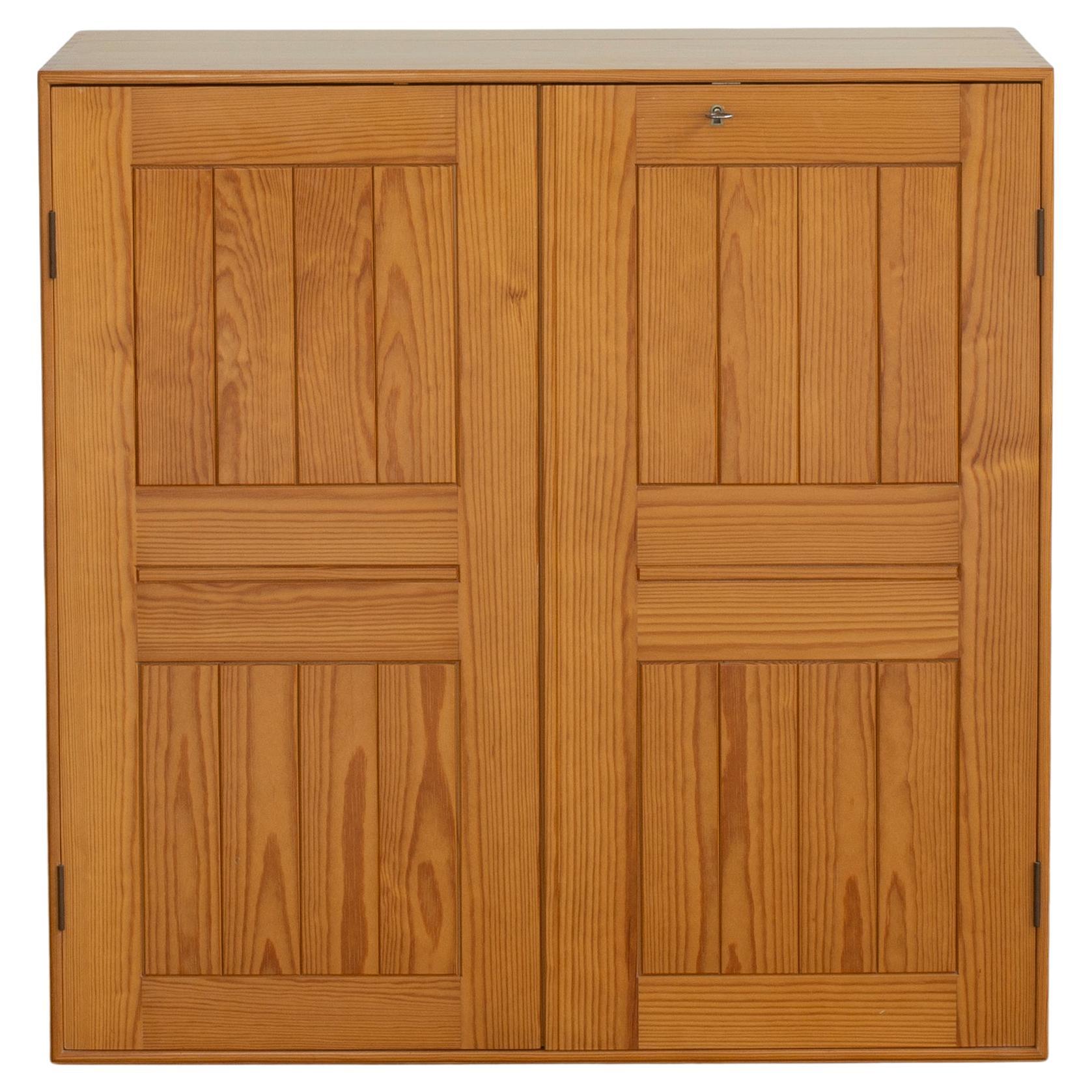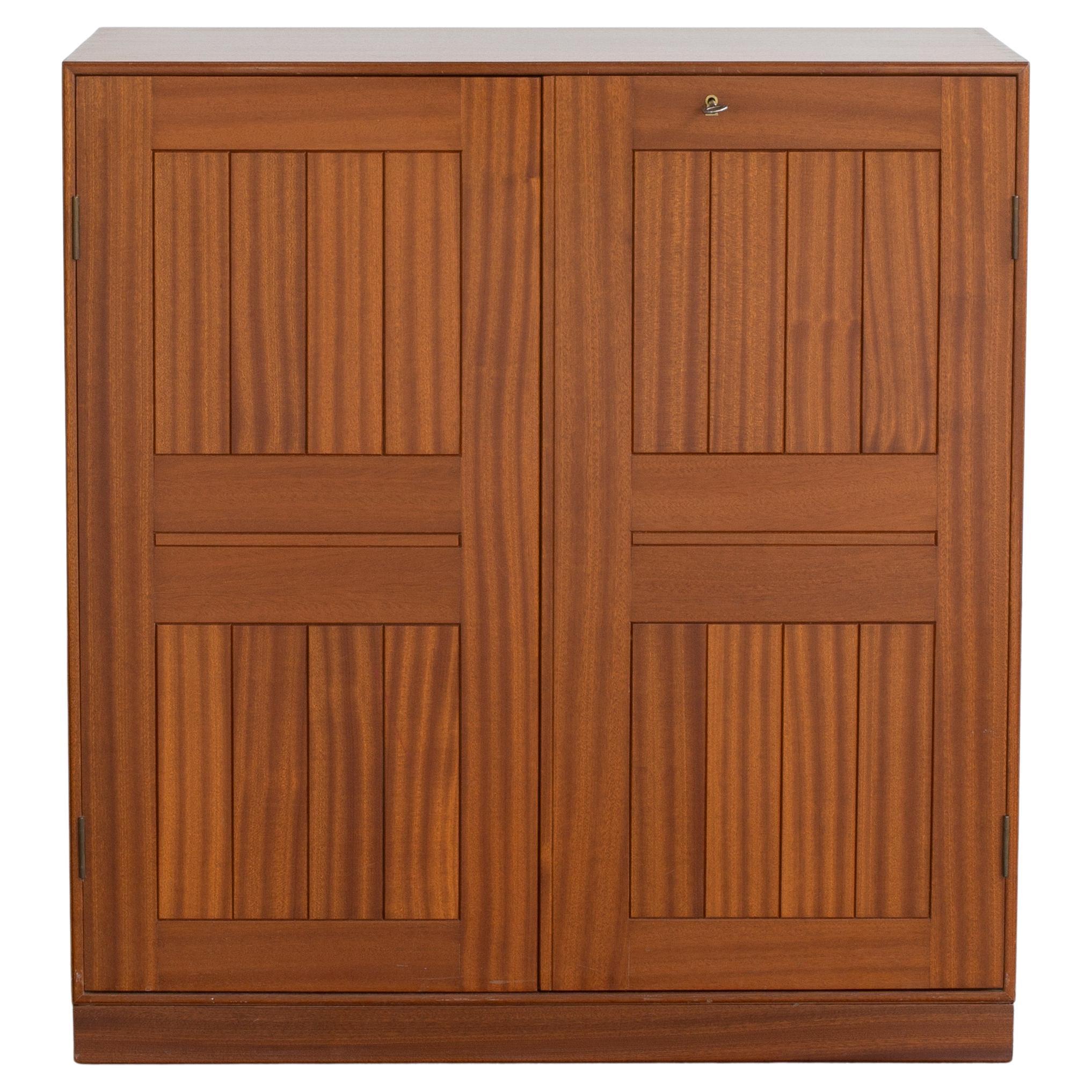Items Similar to Carl Koch Techbuilt Spacemaking Furniture
Want more images or videos?
Request additional images or videos from the seller
1 of 21
Carl Koch Techbuilt Spacemaking Furniture
About the Item
Unit furniture of Philippine mahogany with white Masonite panels consisting of a module with sliding Masonite doors and a double wide module with an open front. Designed by Harvard-educated, Boston-area architect, designer, and urban planner Carl Koch as a corollary to his prefabricated Techbuilt houses and produced in 1955.
Koch was a pioneering champion of prefabrication in housing in mid-century America, first with his much-publicized but ill-fated all-steel Lustron houses in the late 1930’s, then with his more successful wooden Tech-Built houses, introduced in 1953. In At Home with Tomorrow, his 1958 paean to prefabrication, he lays out his opposition to the traditional hammer-and-handsaw construction methods that remained dominant even with conceptually modernist structures. His designs generally hewed to a regional brand of modernism rather than orthodox international style, taking into account local topography and climate—his iconic form is an A-frame with a pitched roof, more sensible in New England winters than a flat roof (though there are such Techbuilt designs). The basic Techbuilt formula suggested that modular, industrial production methods of the components combined with knock-down shipping and on-site assembly equalled lower cost and less waste. Variety and individuality could be achieved in how the elements were combined.
This underlying philosophy involving modularity, flexibility, and industrial production methods applied to Spacemaking furniture as well, although interestingly enough, the furniture design preceded the architectural application, as Koch (et al) had submitted a version to the 1947 MoMA Low-Cost Furniture Competition (and so these units also preceded the famous 1951 Eames Storage Unit, a conceptually similar idea executed with metal framing). The furniture line began with requests for freestanding wardrobe closets and then extended by modules to include 21 different basic pieces of furniture including chests, shelves, room dividers, and desks. All were shipped knocked-down and could be assembled with just a screwdriver. Per the Spacemaking literature, the buyer could arrange the composition himself, and change it around or add to it as desired. When purchased along with a Techbuilt house, the cost of the furniture could even be folded into the mortgage.
Though conceptually elegant, useful, and visually appropriate to modernist interiors, Spacemaking furniture was produced only in two very short runs in 1955, sharing the same fate as numerous designs by architects and designers who attempted to manufacture and market their own furniture designs. By Koch’s own assessment, the furniture proved too costly to make, despite its prefabricated nature, and a number of the components did not meet quality expectations. Only the wardrobes (basically taller versions of the present units) remained in production. While it is unknown how many Spacemaking units were placed in Techbuilt houses outside the ones photographed in the literature (and some of these photo shoots may have been staged), it is doubtful that many orders were placed outside the Techbuilt program. I have never encountered any examples other than the ones here, nor have the editors of a website devoted to Techbuilt housing. A rare opportunity to acquire an architecturally resonant and historically significant design. Price is for the set of two pieces--the sliding door unit is freestanding; the open unit shares a central post and screws together to form a single double-wide piece. Provenance: Removed from a Techbuilt house outside of Boston. The attached architectural photograph came along with the furniture, and may be the source. Note: shelves are not included with the cabinets (foam core place markers were used in the photographs) but can be supplied after purchase.
- Creator:Carl Koch (Designer)
- Dimensions:Height: 29 in (73.66 cm)Width: 148 in (375.92 cm)Depth: 13 in (33.02 cm)
- Sold As:Set of 2
- Style:Mid-Century Modern (Of the Period)
- Materials and Techniques:
- Place of Origin:
- Period:
- Date of Manufacture:1955
- Condition:Replacements made: Shelves are not included but can be supplied after purchase; the foam core place markers in the photographs suggest white glass replacements. The shelf pins would also be replacements. Everything else is original. Wear consistent with age and use. Minor losses. Minor structural damages. The Masonite panels and doors have been cleaned and polished. The Philippine mahogany has been lightly refurbished to enhance the original finish. Wear consistent with age and use remains visible.
- Seller Location:New York, NY
- Reference Number:1stDibs: LU828531293162
About the Seller
4.9
Recognized Seller
These prestigious sellers are industry leaders and represent the highest echelon for item quality and design.
Established in 1995
1stDibs seller since 2007
247 sales on 1stDibs
Typical response time: 1 hour
Associations
20th Century Specialists
- ShippingRetrieving quote...Ships From: New York, NY
- Return PolicyA return for this item may be initiated within 3 days of delivery.
More From This SellerView All
- Art and Trade Shop Unit CabinetBy Eero SaarinenLocated in New York, NYCustom and well-crafted modular sliding-door cabinet produced by Eric R.E. Schuster of the Art and Trade Shop of New York City in the early 1940s. Stylistically related to case goods...Category
Vintage 1940s American Mid-Century Modern Cabinets
MaterialsBirch
- Dan Kiley Tall CabinetBy Dan KileyLocated in New York, NYTall cabinet of solid and painted wood, with six drawers and two doors, by renowned architect and landscape designer Dan Kiley. Basically, a freestanding built-in from the Charles an...Category
Vintage 1950s American Mid-Century Modern Cabinets
MaterialsWood
- James Bearden Segment Cabinet 'Square'By James BeardenLocated in New York, NY"Segment Cabinet (square)” a sculptural work in torch-cut and polychromed steel with fused bronze, solvent dyes, and glass enamel, with a birch top. By American artist James Bearden. The square cabinet, with its dramatic composition and juxtaposition of shapes and colors drawn from Bearden’s evolving vocabulary, is perched atop four long legs; it has an asymmetrically set hinged front door. Signed and with a Certificate of Authenticity from the artist. Bearden's work was featured in a 2020 solo exhibition at the NY Design Center titled "James Bearden: Technical and Aesthetic Revelations," in an article in the January 2017 Interior Design Magazine; in an introspective feature on 1stdibs; and in a feature article in DSM Magazine. In an introduction to the 2020 exhibition, curator Kartrina Weinberg wrote: "In the two years after the artist’s last solo exhibition — where the material reality of steel was evident in both its title and monochromatic appearance — Mr. Bearden sought to break free from pre-conceived judgment of his medium, as well as the persistent misnomers applied to his art. While subtle color play has always existed in his previous works, the development in his coloring technique — from painted polychrome to dyed glass enamel — allowed for dramatic saturation and stunning complexity in his new palette, bringing heightened immediacy to his biomorphic and anthropomorphic imagery. The artist had always challenged the gravitational reality of steel, but he has found new expressions towards verticality and delicacy, transcending material and elevating function. The open compositions, ranging from ornamental tracery to dynamic use of negative space, allow for the interplay of light and air, animating the environment with ever-changing viewing possibilities. This exhibition took inspiration from the naturalist traditions and fantastical imagery of Early Netherlandish paintings...Category
2010s American Mid-Century Modern Cabinets
MaterialsBronze, Enamel, Steel
- Unique Elaine Lustig Cohen CabinetBy Elaine Lustig CohenLocated in New York, NYTwo-piece custom cabinet of birch with black-and-white lacquered fronts, designed by Elaine Lustig Cohen (1927-2016) circa 1961 for her own townhouse on the Upper East Side in New Yo...Category
Vintage 1960s American Mid-Century Modern Cabinets
MaterialsSteel
- Norman Cherner Cabinet for Multiflex Corp.By Norman Cherner, Multiflex Corp.Located in New York, NYModular "Studio Group" cabinet composed of walnut with a white micarta top, lacquered masonite doors and panels, and angle-steel pulls and frame. The “Curtainwall” principle applied to furniture, allowing easy extension in either a vertical or horizontal direction. An elegant riff on the Eames ESU, designed by Norman Cherner (along with Matthew Cooper) and manufactured by the Multiflex Corp circa 1954. The Studio Group was featured in George Nelson’s Storage book and was a MoMA Good Design selection in 1954. The present unit has two sliding door cabinets flanking a bank of three drawers. Behind each pair of sliding doors is a black masonite bottom and white masonite back. The frame, which disassembles to a large degree, is held together with brass buttons that are optionally visible on the outside (MoMA preferred visibility as expressive and suitable to the piece). Cherner famously designed the narrow-waisted Plycraft armchair along with an award-winning furniture line for Konwiser and was the author of the 1953 book Make Your Own Modern Furniture. Along with a nine drawer chest of drawers and a double-tall unit...Category
Vintage 1950s American Mid-Century Modern Cabinets
MaterialsSteel
- Norman Cherner Double High Cabinet for Multiflex Corp.By Norman Cherner, Multiflex Corp.Located in New York, NYStacked and fastened "Studio Group" modular units composed of walnut, angled steel, and lacquered masonite. with sliding doors at top and an open compartment at bottom. The “Curtainw...Category
Vintage 1950s American Mid-Century Modern Cabinets
MaterialsSteel
You May Also Like
- Monterey Furniture Cupboard Mason Furniture 1930'sBy Monterey FurnitureLocated in Fulton, CAFine and authentic period example of the California Rancho era furniture. A signed "Monterey" and "Mason" furniture cupboard. Original finish with hand painted stylized floral detail...Category
Vintage 1930s American Rancho Monterey Cabinets
MaterialsIron
- 50s-60s FurnitureBy Non-Standard Furniture and LightingLocated in Milano, ITCabinet with hinged door, exposed drawers and open shelves, made of ash veneer wood.Category
Vintage 1950s Italian Mid-Century Modern Cabinets
MaterialsAsh
- Mogens Koch Cabinet for Rud. RasmussenBy Rud Rasmussen, Mogens KochLocated in Copenhagen, DKMogens Koch cabinet in Oregon Pine. Executed by Rud. Rasmussen Reverse with paper label ‘RUD. RASMUSSENS/SNEDKERIER/KØBENHAVN/DANMARK.Category
Mid-20th Century Danish Scandinavian Modern Cabinets
MaterialsPine
- Mogens Koch Bookcases for Rud. RasmussenBy Rud Rasmussen, Mogens KochLocated in Copenhagen, DKA cabinet and two bookcases in ash. Executed by Rud. Rasmussen. Reverse with paper labels ‘RUD. RASMUSSENS/SNEDKERIER/COPENHAGEN/DENMARK.Category
Mid-20th Century Danish Scandinavian Modern Cabinets
MaterialsAsh
- Mogens Koch Cabinet for Rud. RasmussenBy Rud Rasmussen, Mogens KochLocated in Copenhagen, DKMogens Koch wall-mounted cabinet in pine. Executed by Rud. Rasmussen Reverse with paper label ‘RUD. RASMUSSENS/SNEDKERIER/KØBENHAVN/DANMARK.Category
Mid-20th Century Danish Scandinavian Modern Cabinets
MaterialsPine
- Mogens Koch Cabinet for Rud. RasmussenBy Rud Rasmussen, Mogens KochLocated in Copenhagen, DKMogens Koch cabinet in mahogani. Executed by Rud. Rasmussen Reverse with paper label ‘RUD. RASMUSSENS/SNEDKERIER/KØBENHAVN/DANMARK.Category
Mid-20th Century Danish Scandinavian Modern Cabinets
MaterialsMahogany
Recently Viewed
View AllMore Ways To Browse
Wardrobe Closet Used
Storage Chest With Sliding Doors
Single Door Wardrobe
Mid Century Desk And Storage Unit
Single Door Wardrobe Cabinet
Tall Wardrobe
Used Metal Wardrobe Cabinet
Wardrobe Sliding
Vintage Industrial Storage Units
Tall Sliding Door Cabinet
Tall Steel Cabinet
Closet Door
Closet Doors
Industrial Mid Century Steel Cabinets
Tall Cabinet With Sliding Doors
Tall Storage With Sliding Doors
Sliding Door Wardrobes
Mid Century Low Chest
